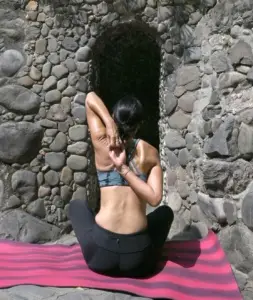
Arthritis is a common condition characterized by inflammation and stiffness in joints, often causing pain and reduced mobility. Mindful-based practices can help alleviate symptoms, improve joint flexibility, and enhance overall quality of life for arthritis patients.
Benefits of Arthritis Therapy:
Considerations before Starting:
Mindful Poses for Arthritis:
Breathing Exercises for Arthritis:
Meditation Practice for Arthritis:
Summary with Tips:
By integrating these mindful poses, breathing exercises, and meditation techniques into your routine, you can effectively manage arthritis symptoms, improve joint health, and cultivate a greater sense of well-being. Adjust the practices according to your comfort level and enjoy the journey towards better joint health and overall vitality.

GoInwards is an IRS 501(c)(3) Non-Governmental Organization (NGO), chartered to advance wellness through integrative health related awareness, prevention, intervention, and resilience-based educational programs.
FEIN 90-0609802